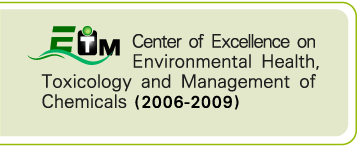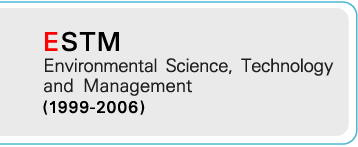การศึกษาปริมาณอาร์ซีนิกและความสามารถในการละลายออกจากดิน พื้นที่ศึกษาบริเวณมาบตาพุดและนาข้าวบางแห่งในประเทศไทย
ผศ.ดร.สุวิสา มหาสันทนะ คณะสาธารณสุขศาสตร์ มหาวิทยาลัยมหิดล การวิเคราะห์เลือกพื้นที่ศึกษาเรื่องดินนาข้าวที่มีโอกาสปนเปื้อนอาร์ซีนิกและมีการปลูกข้าวมากที่ เหมาะสม โดยใช้ระบบสารสนเทศทางภูมิศาสตร์พบว่า พื้นที่ศึกษาที่เหมาะสมในเรื่องดินนาข้าว ที่มีโอกาสปนเปื้อนอาร์ซีนิกตามธรรมชาติและมีการปลูกข้าวมาก ได้แก่ จังหวัดสุพรรณบุรี และ จังหวัดเชียงราย ได้ทำการเก็บข้อมูลดิน จากพื้นที่ที่ศึกษาในปี พ.ศ. 2556 จากพื้นที่นา 2 แห่งของ จังหวัดสุพรรณบุรี จำนวน 73 ตัวอย่าง และจากพื้นที่นา 3 แห่ง ที่จังหวัดเชียงราย 126 ตัวอย่าง และตัวอย่างข้อมูลดินบริเวณมาบตาพุดจำนวน 65 ตัวอย่าง โดยการเก็บตัวอย่างดินที่มาบตาพุด ได้เลือกจากบริเวณใกล้เคียง ที่พบการปนเปื้อนอาร์ซีนิกในน้ำบ่อตื้น มาทำการวิเคราะห์ปริมาณความเข้มข้นอาร์ซีนิกในดิน พบว่า ดินนาจากสุพรรณบุรีและเขียงราย มีอาร์ซีนิกเป็นองค์ประกอบ เกินค่ามาตรฐานทุกพื้นที่ศึกษา และ ดินในบริเวณมาบตาพุด พบอาร์ซีนิกเป็นองค์ประกอบเกินค่า มาตรฐานร้อยละ 80 ของสถานีเก็บตัวอย่าง การศึกษาความสามารถในการละลายอาร์ซีนิกจาก ดินนา พบว่าสามารถละลายในสภาวะเบสดีกว่าสภาวะเป็นกรด แหล่งข้อมูล: โครงการวิจัยชื่อ “การศึกษาปริมาณอาร์ซีนิกและความสามารถในการละลายออกจากดิน พื้นที่ศึกษาบริเวณมาบตาพุดและนาข้าวบางแห่งในประเทศไทย” –… (read more)
 Center of Excellence on Environmental Health and Toxicology (EHT)
Center of Excellence on Environmental Health and Toxicology (EHT)










